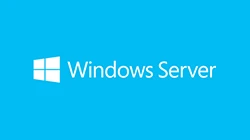Server Roles & Functions
 Server roles are the different functions that a server can perform in a computer network. Some common server roles include:
Server roles are the different functions that a server can perform in a computer network. Some common server roles include:
File Server: A file server is a type of server that provides a centralized location for storing and managing files that can be accessed by users on the network.
Print Server: A print server is a type of server that manages one or more printers and allows users on the network to access and print documents.
Domain Controller: A domain controller is a type of server that manages user accounts and security policies for a network that uses the Windows Active Directory domain service.
Mail Server: A mail server is a type of server that manages email services for a network.
Web Server: A web server is a type of server that hosts websites and provides web content to users who access them through the internet.
Server roles can be installed and configured on a server to provide specific services to users on a network.
What is a server
A server is a computer or device that provides a service to another computer or device, known as a client. For example, a web server is a computer that stores and serves web pages to clients that connect to it over the internet. A client can be another server, a desktop computer, a laptop, a tablet, or a smartphone, among other things. Servers are typically more powerful and have more storage and memory than other types of computers because they need to be able to handle multiple clients simultaneously and efficiently.
Why are servers important?
It is important to know the server roles on a network because different server roles provide different services and functions. Knowing the server roles can help you determine which servers are responsible for providing specific services, such as file storage or email, and can help you troubleshoot any issues that may arise with those services.
In addition, knowing the server roles can help you plan and manage your network more effectively, by allowing you to allocate resources and configure settings based on the specific needs of each server role.
How to check server roles?
To check the server roles on a Windows Server, follow these steps:
- Open the Server Manager. This can be done by clicking the “Server Manager” icon on the taskbar, or by going to the Start menu and selecting “Server Manager”.
- In the Server Manager window, click the “Manage” drop-down menu and select “Add Roles and Features”.
- In the “Add Roles and Features Wizard”, select the server on which you want to check the roles, and click “Next”.
- On the “Select Server Roles” page, you will see a list of all the server roles that are installed on the selected server. You can click on each role to view its description and configure its settings.
- Once you have finished reviewing the server roles, click “Next” to continue and complete the wizard.
- Alternatively, you can use the command line to check the server roles on a Windows Server. To do this, follow these steps:
- Open the command prompt. This can be done by going to the Start menu and typing “cmd” in the search box.
- In the command prompt, type the following command and press Enter:
- Copy code
dism /online /get-features
This will display a list of all the server roles that are installed on the server, along with their status (enabled or disabled).
Note: The steps and commands mentioned above are for a Windows Server. The exact steps and commands may vary depending on the operating system and server software you are using.
Contact Pisys for further guidance on server roles.
